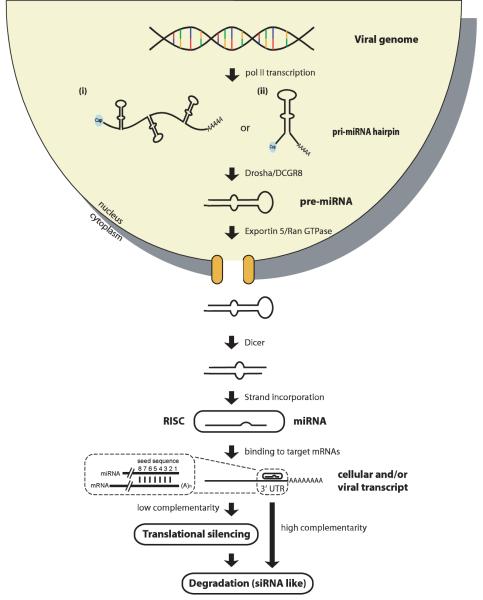Figure 1.
Biogenesis of miRNAs. Genes encoding miRNAs are generally transcribed from polII promoters. The majority of miRNAs are encoded in introns, but a small percentage are encoded in exons of protein coding genes. MicroRNA genes can occur either as (i) clusters of multiple hairpins or as (ii) a single hairpin structure. The hairpins in primary transcripts (pri-miRNAs) are recognized by Drosha/DGCR8, a RNase III type endonuclease that cleaves off the 5′ and 3′ ends, leaving a two-nucleotide 3′ overhang. The 60-80 nt hairpin, termed pre-miRNA, is rapidly exported from the nucleus to the cytoplasm via the Exportin5/RAN-GTPase pathway. The pre-miRNA is now recognized by a cytoplasmic RNase III type endonuclease, Dicer, which is also known to cleave dsRNA to create siRNA. Dicer cleaves off the bulged end of the hairpin now forming a short dsRNA with each end having a two nucleotide 3′ overhang. The final step in miRNA biogenesis is the incorporation of one strand of the short RNA duplex into the RNA Induced Silencing Complex (RISC) to form a mature miRNA. Both strands can be incorporated into RISC and as a consequence many miRNA genes encode two mature miRNAs. Once the mature miRNA is incorporated into RISC, it targets the 3′ UTR of mRNAs that contain complementary sequences. It has been observed that positions 2-8 of the miRNA are most important for targeting of mRNAs; this site is referred to as the miRNA seed sequence (for review see [8, 9]).

